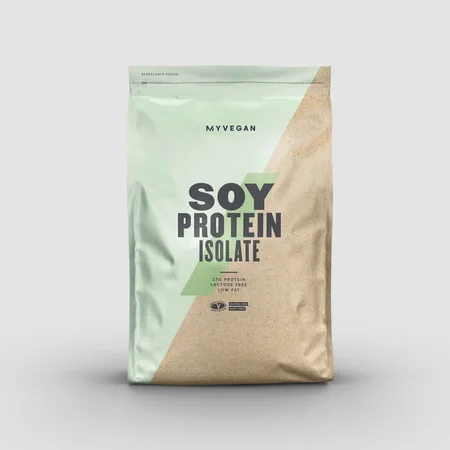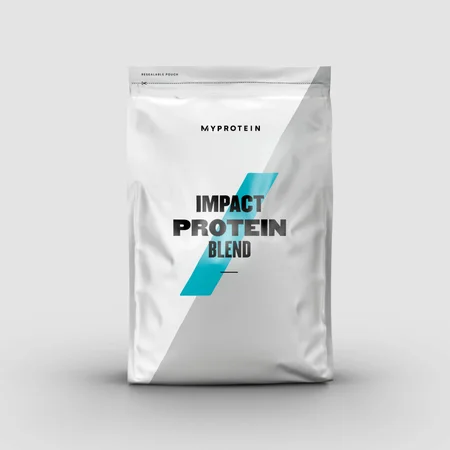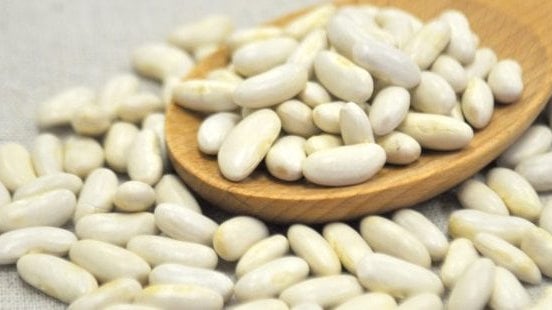
Whether you’re buying a protein supplement for the first time, or you’re a seasoned gym veteran looking for something new, the vast array of protein supplements available can make choosing the right one for you a bit confusing.
So, we’ve decided to look into the different kinds of protein blends available, and whether they can help you with your goals, regardless of how much dumbbell-lifting or protein-shaking experience you have.
Protein blends are a mix of different proteins. Not all protein sources are the same, as different sources of protein have various characteristics that can benefit you in different ways.1 By mixing proteins together you can get multiple benefits in a single shake. A good protein blend supplement can be a great way to do this.
To understand how different protein blends may help you, it is important to understand the difference between the major protein sources.
Types of Protein
Three of the most popular proteins supplements are whey, casein, and soy.2 Each of these proteins are high quality, meaning that they contain all 9 of the essential amino acids.1 Despite this, they each differ in the way they help the body to build muscle. A big reason for this is their varied digestion rate.3
Proteins are made up of amino acids. Once you consume a protein source, the protein is digested and the amino acids enter the bloodstream. The faster the protein is digested, the faster the amino acids are available to be used to build new muscle.3
Whey Protein
Whey protein is digested very quickly which means that the amino acids are available to build muscle shortly after being consumed.3 Whey is also very high in leucine which is needed to trigger the process of building muscle in the body.1
Due to this, whey protein supplements are considered to be the best protein source for building muscle and increasing the rate of recovery after a resistance training session.4
Following whey protein ingestion, amino acids availability is maximized after a short period of time and stays elevated for 3-4 hours. After which, they will return to baseline with a drop in muscle protein synthesis rates.5
Casein
Casein has a slower digestion rate in comparison to whey.3 This is because casein ‘clots up’ up in the stomach during digestion.3 This results in casein’s amino acids entering the bloodstream in a slower, more sustained way compared to whey protein. Casein has also been shown to reduce muscle protein breakdown.6 This is important as it will help preserve the positive muscle protein turnover required for muscle gain.
Soy Protein
Soy protein does not have as much leucine as whey or casein and has a digestion rate between the two. Due to the lower leucine content, soy does not elevate muscle protein synthesis to the same extent as whey.6 However, an advantage to soy is that it contains more arginine and glutamine than either whey or casein.1 Arginine can help with blood flow, meaning that amino acids can get to the muscles easier2 and glutamine can help with gut health.7
What are the Benefits of Protein Blends?
Combining whey, soy, and casein protein in a single shake will provide the different benefits of each making for a highly effective supplement.2
In the evidence, the strongest case that provides support for this is a study that compared a protein blend of 25% soy, 25% casein, and 50% whey to a whey-only source of protein. They showed that the blend elevated rates of muscle protein synthesis in the same way as whey protein, but that blood amino acid concentrations stayed higher for longer.6
Additionally, not all three of these sources need to be combined. The two milk proteins —whey and casein — have been shown to be more beneficial when blended together than whey protein alone. In a study that looked at 10 weeks of resistance training, those that were using the blend increased their muscle mass more than those who were using just whey protein.8
What Makes a Good Protein Blend?
A good protein blend will contain a range of different protein sources. To maximize the benefit, the protein sources should have various digestion rates and different amino acid compositions.
The optimal blend may consist of whey for the high leucine content and fast digestibility, casein for the prolonged effect of muscle protein synthesis, and soy for the additional glutamine and arginine.2
When it comes to the specific composition of a protein blend, the numbers are hard to pinpoint. It has been speculated that different compositions may be more beneficial to certain circumstances.2
For example, if you’re looking to improve your strength, you may require a different blend than if you’re looking to increase your 10km time. In this instance, due to the nature and duration of different types training, the strength goal may require a blend consisting of more whey protein, while the endurance focused may need more casein.
How Do You Use a Protein Blend?
Protein blends will help contribute to your vitally important daily protein intake. When looking to improve strength, recover better, or change your body composition i.e. build more muscle and lose fat, high protein diets have proven highly effective.9 It has been suggested that 2g/kg/d would be a minimum intake for improving body composition.10 For larger individuals, for example a 242 pound football player, 2g/kg/d would equate to 220g of protein.
An intake as high as 3.4g/kg/d has been to shown to help build muscle and drop body fat with no reported negative effects or health risks.10 For our 242 pound football player, this would be a massive 374g of protein. That’s a lot of chicken breast!
High protein intakes such as this can be hard to obtain from whole food sources alone. There’s only so much chicken you can eat without getting bored, and a flavorsome shake can provide a welcome alternative. A protein blend can therefore be used throughout the day as an easy way to ensure this high protein intake is met.
A great time for a protein blend would also be following resistance training. Research has shown that protein combined with resistance exercise has the greatest effect on muscle protein synthesis.4
Although evidence has shown that muscle protein synthesis rates stay elevated for up to 24 hours following resistance training, a protein shake is a great option for when you are coming straight out of the gym.11
Having a protein blend pre-prepared can mean you have boosted your protein intake before you have even changed out of your gym kit. This will ensure you are optimizing your recovery and giving yourself the best chance of building muscle and increasing strength.
Take Home Message
Protein blends can be a great way to maximize muscle gain, recover properly from training, and improve your body composition. By combining protein sources with different digestion rates and amino acids compositions, they can increase muscle gain to a greater extent than a sole source of protein.
They provide an easy, convenient, and flavorsome way to take advantage of the various benefits different protein sources provide and ensure that your daily protein intake is met. This is especially important when looking to improve your body composition or hit a specific strength goal.9

Liam is a certified sport nutritionist with the International Society of Sport Nutrition and is enrolled on the British Dietetics Association’s Sport and Exercise Nutrition register. He has a Bachelor’s of Science in Sport and Exercise Science and is graduate of the ISSN Diploma in Applied Sport and Exercise Nutrition.
Liam is an experienced personal trainer, helping clients reach their health and fitness goals with practical, evidence informed exercise and nutrition advice.
In his spare time Liam has competed in numerous powerlifting competitions and enjoys hill walking, football and expanding his recipe repertoire in the kitchen. Find out more about Liam's experience here.
1. Gorissen SH, Crombag JR, Senden JM, Waterval WA, Bierau J, Verdijk LB, Loon Van LC. (2018). Protein content and amino acid composition of commercially available plant‐based protein isolates
2. Paul LG. (2009). The Rationale for Consuming Protein Blends in Sports Nutrition. The Journal of the American College of Nutrition. 2013. 28:sup4 464S-472S.
3. Boirie Y, Dangin M, Gachon P, Vasson MP, Maubois JL, Beaufre`re B (1997). Slow and fast dietary proteins differently modulate postprandial protein accretion. Proc Natl Acad Sci USA. 94:14930–14935, 1997.
4. West DW, Burd NA, Coffey VG, Baker SK, Burke LM, Hawley JA… Phillips SM. (2011). Rapid aminoacidemia enhances myofibrillar protein synthesis and anabolic intramuscular signaling responses after resistance exercise. Am J Clin Nutr. 2011. Sep;94(3)795-803.
5. Atherton PJ, Etheridge T, Watt PW, Wilkinson D, Selby A, Rankin D…Rennie MJ. (2010). Muscle full effect after oral protein: time-dependent concordance and discordance between muscle protein synthesis and mTORC1 signaling. The American Journal of Clinical Nutrition. 2010. 92(5): 1080-8
6. Tang JE, Moore DR, Kujbida GW, Tarnopolsky MA, Phillips SM. (2009). Ingestion of whey hydrolysate, casein, or soy protein isolate: effects on mixed muscle protein synthesis at rest and following resistance exercise in young men. J Appl Physiol 2009. Sep;107(3):987-92.
7. van der Hulst RR, van Kreel BK, von Meyenfeldt MF, Brummer RJ, Arends JW, Deutz NE, Soeters PB. (1993). Glutamine and the preservation of gut integrity. Lancet. 1993. May 29;341.
8. Kerksick CM, Rasmussen CJ, Lancaster SL, Magu B, Smith P, Melton C,… Kreider RB. (2006). The effects of protein and amino acid supplementation on performance and training adaptations during ten weeks of resistance training. J Strength Cond Res. 2006. Aug;20(3):643-53.
9. Jager R, Kerksick CM, Campbell BI, Cribb PJ, Wells DS, Skwiat TM… Antonio Jose. (2017). International Societ of Sports Nutrition Position Stand: protein and exercise. Journal of the International Society of Sports Nutrition. 2017. 14:20.
10. Antonio J, Ellerboek A, Silver T, Orris S, Scheiner M, Gonzalez A, Peacock CA. (2015). A high protein diet (3.4 g/kg/d) combined with a heavy resistance training program improves body composition in healthy trained men and women – a follow-up investigation. J Int Soc Sports Nutr. 2015. 12:39.
11. Burd NA, West DWD, Moore DR, Atherton PJ, Staples AW, Prior T, et al. (2011). Enhanced amino acid sensitivity of myofibrillar protein synthesis persists for up to 24 h after resistance exercise in young men. J Nutr. 2011;141:568–73








